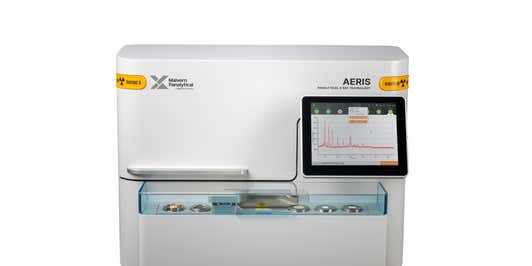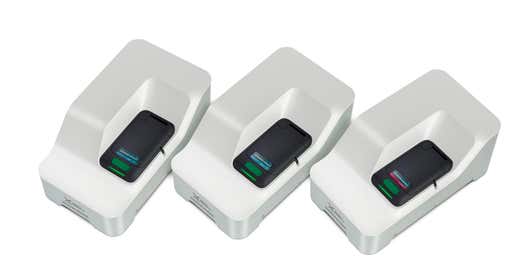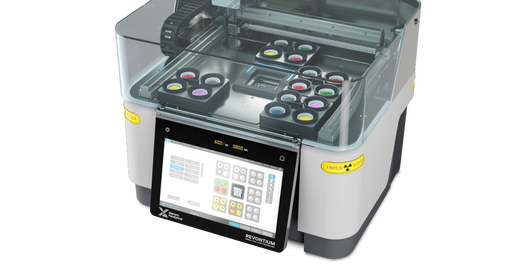Hydrogen can significantly aid in decarbonization by serving as a clean energy carrier, reducing reliance on fossil fuels across various sectors. In transportation, hydrogen fuel cells power vehicles with water vapor as the only byproduct, making it ideal for both light and heavy-duty transport. Industrial processes, such as steel production and chemical manufacturing, can lower their carbon footprint by using green hydrogen.
Additionally, hydrogen can be used for heating buildings and generating electricity, offering a low-carbon alternative to conventional methods. By integrating hydrogen into these areas, we can reduce carbon emissions, and support the transition to a sustainable, low-carbon future.
Explore
Understanding hydrogen catalysts
Hydrogen catalysts are essential materials that enhance the efficiency of hydrogen production, storage, and utilization, playing a crucial role in the transition to a sustainable energy economy. They are used in various processes, such as electrolysis (using platinum and iridium oxide), photocatalysis (with titanium dioxide), and steam reforming (with nickel-based catalysts) for hydrogen production.
In fuel cells, platinum and nickel catalysts facilitate electrochemical reactions to produce electricity from hydrogen, while storage catalysts aid in the efficient absorption and desorption of hydrogen in materials like metal hydrides. Additionally, hydrogen catalysts are integral to industrial processes such as ammonia production and hydrocracking, contributing to cleaner energy and innovative industrial applications.
A sustainable, hydrogen-based economy
Key components of a hydrogen-based economy are:
- Hydrogen production
- Steam methane reforming (SMR) is the conventional way of producing hydrogen by oxidizing methane into hydrogen and CO2. A cleaner way of producing hydrogen is via electrolyzers, which split water into hydrogen and oxygen using electricity. If electricity comes from renewable sources like solar and wind, then it is called “green hydrogen”.
- Hydrogen Storage
- Hydrogen can be stored in compressed or liquified form. Alternately it can be stored chemically as metal hydrides.
- Hydrogen utilization
- Hydrogen can be used to produce electricity, can be burned to produce heat, or can be used as a reducing agent to produce metals from oxides. Fuel cells, typically used in hydrogen EVs, produce electricity via the oxidation of hydrogen.
Production of fuel cells and electrolyzers
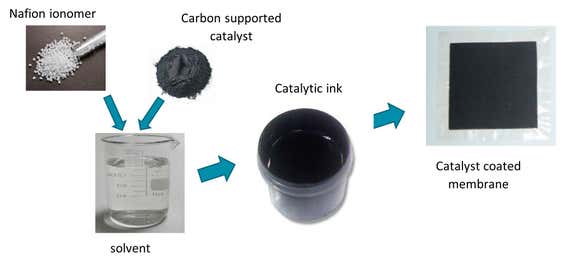
Production of electrolyzer and fuel cells involves carbon supported catalyst powder, which is turned into catalytic ink and coated on a proton exchange polymer membrane.
Catalytic powder contains nano-sized metal catalysts embedded in porous carbon matrix. Catalytic inks are complex formulations with carbon catalyst aggregates forming interconnected networks with nafion ionomer.
Particle size, particle shape, surface area and porosity in the powder and ink plays an important role in the quality of catalyst coating in terms of homogeneity, porosity and packing density. This is another important parameter for slurry stability in terms of particle agglomeration/sedimentation, and the amount of metal catalyst loading in the powder, ink, and coated membrane.
Particle size solutions for hydrogen catalysts
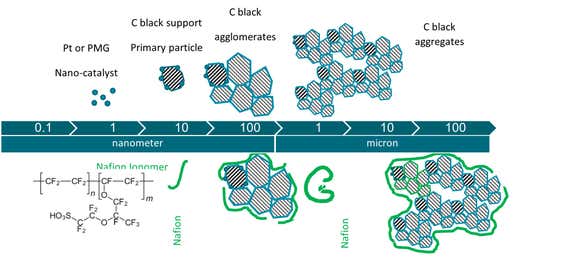
Catalytic ink has a complex formulation containing Pt catalyst supported on carbon black bound by the nafion ionomer with a range of particles and their aggregates, schematically shown in the image right.
Characterizing this requires a range of different particle sizing techniques. We employ X-ray diffraction (XRD), Laser Diffraction (LD) and Dynamic light scattering (DLS) to characterize particles in different size ranges.
Image: Schematics of particles in a catalytic ink formulation.
Catalyst Pt particles
Catalyst Pt particles are 2-5 nm in size and dispersed on activated carbon support matrix. Smaller particles tend to diffuse making it unstable. Larger particle size on the other hand will result in low catalytic activity. Pt particles size can be measured using our Aeris or Empyrean XRD.
XRD measures crystallite size, which below 10 nm is likely to be the particle size.
![[Hydrogen catalyst analysis - graphic 3 - pt catalyst graph.jpg] Hydrogen catalyst analysis - graphic 3 - pt catalyst graph.jpg](https://dam.malvernpanalytical.com/4407a451-df67-4ebd-a63e-b1ca00dbe204/Hydrogen%20catalyst%20analysis%20-%20graphic%203%20-%20pt%20catalyst%20graph_Original%20file.jpg)
Measurement on three different loadings of Pt catalyst on Vulcan carbon support, using Aeris XRD. Derived particle size shows Pt agglomeration at higher Pt loading.
Explore our Pt catalyst analysis solutions
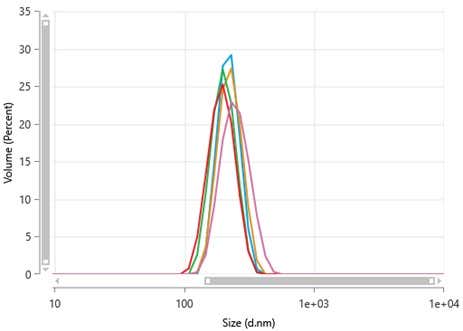
Carbon Black
The size of Carbon Black in the catalytic ink can be determined using Zetasizer, our dynamic light scattering system.
Our patented Non-Invasive Back Scatter (NIBS) technology can automatically vary the path length according to sample characteristics like opacity and concentration. Thus, highly concentrated, and opaque slurries like catalytic ink can be measured delivering accurate particle size across a range of concentrations and sizes whilst maintaining consistent results.
Additionally, Zetasizer can measure zeta potential or the charge on particles. Highly charged particles will stay dispersed while low-charged particles tend to agglomerate.
Image: six repeat DLS measurement of catalyst ink using NIBS with Zetasizer pro, revealing an average size of 210nm for the dispersed carbon particles.
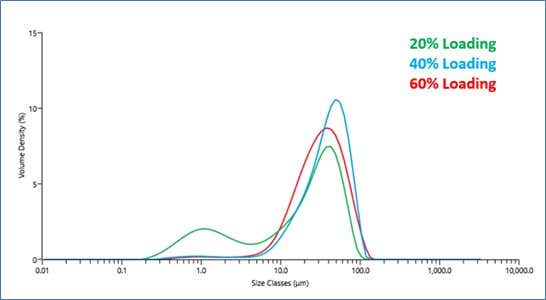
Mastersizer 3000+ provides another way to measure size of carbon particles particularly when agglomerates larger than 1 µm is present in the sample.
Mastersizer 3000+ uses laser diffraction and is considered as industry benchmark for particle sizing due to its high accuracy, repeatability and reliability.
Image: Particle size measured with a Mastersizer 3000 laser diffraction instrument from samples of Pt/C catalytic powder with three different Pt-loading levels (20%, 40%, 60%) on Vulcan XC-72 carbon black support particles.
Explore our carbon black analysis solutions
Elemental composition solutions for hydrogen catalysts

Elemental composition of catalyst powder, ink and coated membrane can be measured with Epsilon 4 or Revontium EDXRF systems.
Zetium WDXRF can be used when analysis of low z impurities below Na is critical.
Image: XRF spectra showing elements present in a Pt/C catalyst obtained by measuring 40% Pt/C samples with an Epsilon 1.
Explore our elemental composition solutions
In-line elemental composition analysis
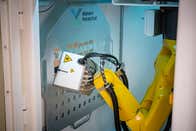
Epsilon Xline
In-line control for continuous roll-to-roll processes
Epsilon Xline is a perfect solution for the investigation of elemental composition homogeneity in catalyst-coated membranes.
By combining our advanced Epsilon 4 technology with in-line functionality, this tool offers real-time material monitoring and up-to-the-minute process control for both the ultrasonic spray coating and roll-to-roll coating processes. This regular analysis means material composition and loading are continually optimized, helping to minimize off-specification production and maximize cost efficiency.
In addition to precise and accurate process control, the Epsilon Xline is adaptable to a wide range of surfaces and catalytic materials.
Learn more about hydrogen catalyst analysis

Analysis of Catalytic Ink for Proton Exchange Membrane Fuel Cells (PEMFC’s)



